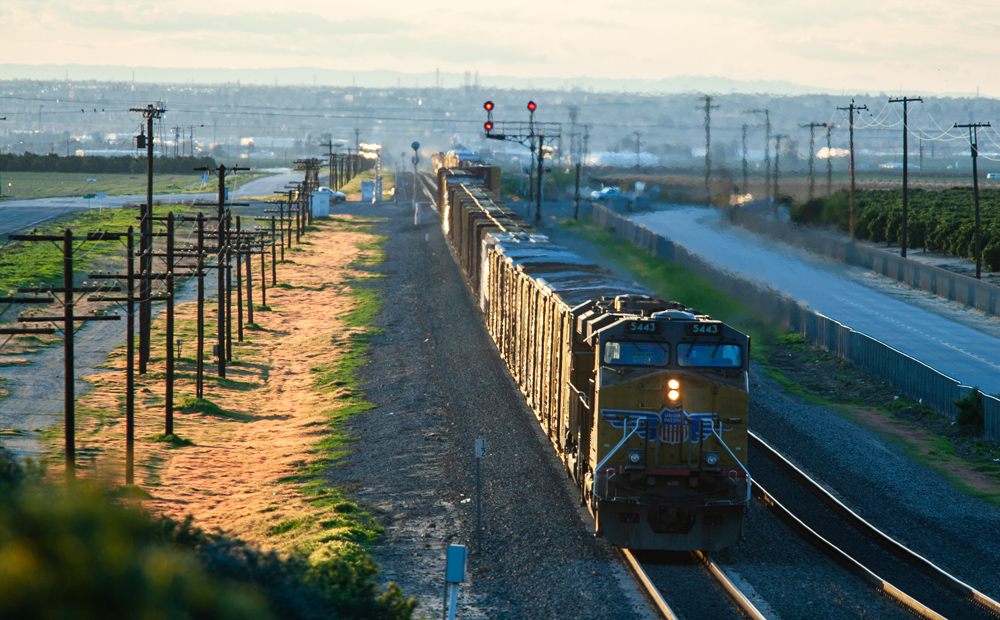Mojave Subdivision

You have heard me mention in a couple of previous stories that I’m proud to be qualified on three different mountain grades; Stampede Pass (former Northern Pacific), my home territory, Stevens Pass (Great Northern), and Tehachapi Pass (Southern Pacific/Santa Fe) on the Mojave Subdivision.
How did I end up in southern California, far from my native Pacific Northwest roots? The Union Pacific was amid service issues with the merger with the Southern Pacific and just starting to install concrete ties on the hill. They were going to need a 16-hour MOW workday for the tie work, which squeezed both railroads to run the normal day’s traffic in 8 hours. The BNSF was going to need extra engineers.
Early in March 1998, BNSF posted a notice seeking qualified mountain-grade locomotive engineers to work the Mojave Subdivision from Bakersfield to Barstow, over Tehachapi Pass — for which they would be borrowing us on a temporary basis. The bid was for ten engineers from the Pacific Division. I won one of the ten bids and I headed to Bakersfield. The seniority was first come, first serve. We ended up with eleven engineers, one of the engineers was off the Camas Prairie whose bid had been lost in the shuffle. Because I had already headed south, I got to stay. When the other engineers found out I was the first one there, thus becoming number one in seniority, we had a difference of opinion. It was going to end up too confusing so it was decided we would go in our seniority order from the Pacific Division. So I went from number one to number eleven in one day.
We had to take student/qualifier trips before we could mark up to the Bakersfield Engineers extra board. On my first student trip, I got a bit of a short call but fortunately, the motel was only minutes away. My engineer that day (I will call RK) was one of the best I have ever known. I would consider him a Top Gun. I did not know at the time that Santa Fe taught its engineers how to instruct student locomotive engineers.
Anyhow, on my first trip, I got out to the locomotive and sat down on the conductor’s side and RK said, “No, No, that’s your seat over there, you’re the engineer today.” I started to protest, “I don’t like this, I’ve never seen this railroad before, only in books and magazines.” RK says, “Don’t worry, I will tell you everything you need to do.”
So, after a bit of a delay, we finally got clearance out of Bakersfield Yard. Once we got to the start of the Mojave Sub., at Kern Junction and the start of BNSF trackage rights over the UP, we rumbled along for eight miles until we reached the Control Point at Sandcut. Sitting behind the red signal, the dispatcher told us we were meeting seven westbounds. That would have taken all day in my home territory in the Northwest. But down there with the speed limits and how they fleeted the trains, it only ended up being 45 minutes to an hour before we got a clear (green) signal to proceed east.
As we sat there and the first headlight showed up, I got out of my seat and headed out the front door to give the train a roll-by inspection from the ground. RK and the conductor shot a glance at each other but I didn’t register it at the time. I was outside as dusk started to darken the sky, kicking weeds, kicking the dirt, and marching around to occupy my time until the next headlight appeared. Not a care in the world.
After I returned to my seat, the engineer and the conductor asked if I had ever heard of a “Mojave Green” rattlesnake. My reply was “No.” Well, they spent the next hour or so telling me all about it, and all the while I suspected them of pulling the new guy’s leg. It turned out they were not kidding, the Mojave Green is one of the most venomous snakes in North America, with a potent mix of neurotoxins and hemotoxins in its bite. That was the last time I gave a roll-by from the ground. I stood on the front of the locomotive after that and I was more cautious taking photos in the desert after that too. I did see some Mojave Greens in the nine months that I was there, however, never close enough to be a problem.














Michael, thanks for sharing your great story!
More like this.
Great story, Michael. (Good to read that your only encounters with Mojave Greens has been at a safe distance!)